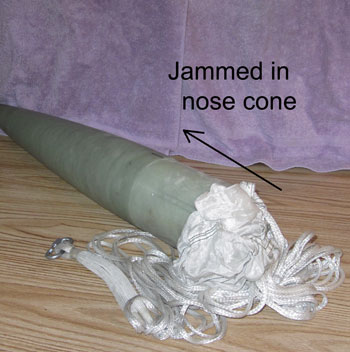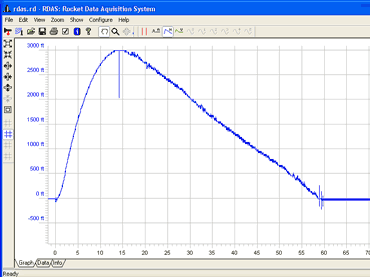
Altitude plot
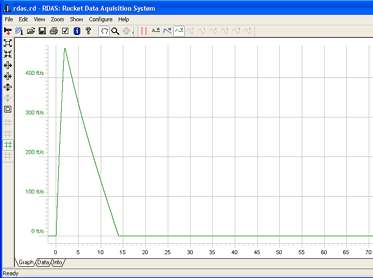
Velocity plot
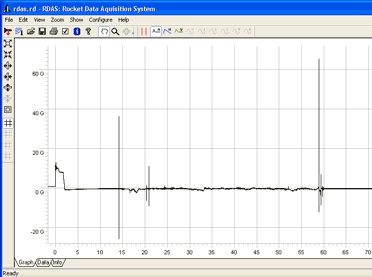
Acceleration plot - Notice the firing of the main parachute by the R-DAS at 14 seconds, and the firing of the backup timer (the PerfectFlite) at 22 seconds. The rocket hit the ground at 58 seconds.
The 4 inch diameter by 8.5 feet long Wildman Extreme kit is a great product from Tim Lehr at Wildman Rocketry. The kit is well designed, incorporating lessons learned from hundreds, if not thousands, of real flights. The airframe, fins, and nosecone are nearly indestructible. The kit contains everything needed to build and fly the rocket, excluding consumables like glue of course. The instructions are clear with pictures and the kit is easy to assemble. All the parts fit correctly with no sanding or tweaking.
The only criticism I can make of the Wildman Extreme is its mass, weighing-in at nearly 13lbs empty.
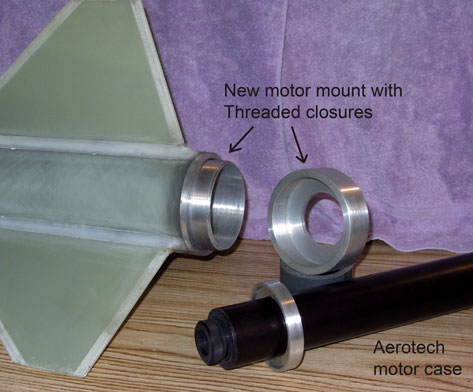
The motor mount was modified to permit motors larger than the default 75mm. I may fly the M hybrid motor in this airframe.
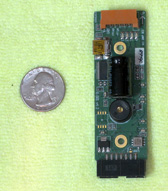
The R-DAS data acquisition system is built and sold by AED Electronics in the Netherlands. The R-DAS was chosen because it contains four user configurable A/D channels in addition to the usual stuff like an altimeter, accelerometer, timer, etc.
Although I didn't have the opportunity to test the user configurable A/D channels, the rest of the product worked well. The R-DAS is small and easy to configure using AED's PC interface. Downloading and plotting the data after the flight was equally simple.

|
Altitude plot |

|
Velocity plot |

|
Acceleration plot - Notice the firing of the main parachute by the R-DAS at 14 seconds, and the firing of the backup timer (the PerfectFlite) at 22 seconds. The rocket hit the ground at 58 seconds. |
It is interesting to zoom in on the first few seconds of the acceleration plot and see that the R-DAS data curve closely matches published thrust curves.
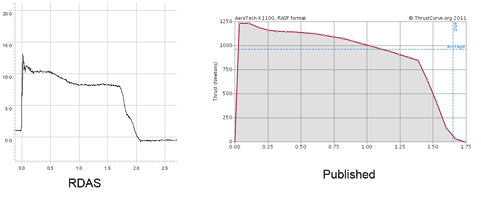

|
A timer. It worked. Not much else to say. http://perfectflite.com/mt3g.html |
In the field the BigRedBee performed flawlessly. During the whole fight GPS coordinates were received on the Kenwood radio. The rocket landed in between rows of chest-high corn and could not be seen. Regardless I was receiving a strong signal and simply walked up to the rocket.
Unfortunately I had the BRB misconfigured and it did not
store a log of the flight. Guess this is what happens when the
instructions are not read ahead of time. The BigRedBee and
Kenwood radio is discussed here:
http://www.spiegl.org/rocket02/BRB
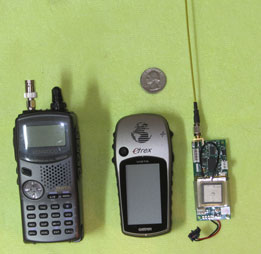
The parachute tangled in UglyGreen.
The nose cone was not permanently sealed because I may want to use the dead space to install electronics in future flights. The ejection charge blew the parachute into dead space in the bottom of the nose cone, where it stuck.
